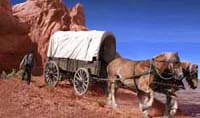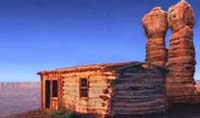
Click on the map numbers or the discription below to load site gallery.
 |
 |
||||||||||||||||||||||||||||||||||||||||||||||||||||||||||||||||||||||||||||||||||||||||
| The Hole-in-the-Rock Foundation Preserving the History and Sharing the Legacy
Friday, Nov. 21st, 1879. "Drove 3 miles to the 10 mile spring but could get no water for our horses. Here we sent our stock off the road to the east about 7 miles to the Harris Ranch, because of scarcity of water on the road. Eddy and Alma Stevens will stay with them for the present. We then drove 10 miles over a soft sandy road crossing several deep gulches where we had to double teams, and camped at dark at the 20 mile spring, where there is plenty of good feed but very little water." |
||||||||||||||||||||||||||||||||||||||||||||||||||||||||||||||||||||||||||||||||||||||||